This article was medically reviewed by Luba Lee, FNP-BC, MS. Luba Lee, FNP-BC is a Board-Certified Family Nurse Practitioner (FNP) and educator in Tennessee with over a decade of clinical experience. Luba has certifications in Pediatric Advanced Life Support (PALS), Emergency Medicine, Advanced Cardiac Life Support (ACLS), Team Building, and Critical Care Nursing. She received her Master of Science in Nursing (MSN) from the University of Tennessee in 2006.
This article has been viewed 69,906 times.
The popliteal pulse, located at the back of the knee (popliteal artery), is the most challenging pulse to find in the body. It’s an important vital sign, though, since the popliteal pulse can help in assessing peripheral artery disease, or determining the severity and nature of a knee or femur injury. If you can’t feel the pulse, this doesn’t necessarily mean anything is wrong. The person may just have deep vessels or thick muscles preventing you from feeling the rhythm in the artery. It’s also very unlikely that you’ll be able to feel your own popliteal pulse, so if you are looking to check your own, have a friend help you out.
Steps
Locating the Popliteal Artery
-
1Get the patient to lie flat. The popliteal pulse can be more difficult to detect than other pulses, so you want to make sure you have good access to the area. Start by having the patient lie down flat on their back if possible.
- If it is not possible for them to get on their back, have them lie down on their side.
- Relaxation is critical to detecting the popliteal pulse. Let the patient know they should allow the leg to go limp. If they are struggling, it may help to take them through some guided breathing.[1]
-
2Flex the knee. Once the patient is lying down, help them flex their knee to a 45-degree angle by lifting their leg up by the sides of the knee.Advertisement
-
3Feel for the artery. Place one hand under the knee for support, and curl your fingers under the knee with the other hand. Use the fingertips to feel for the artery.[2] The artery may feel firmer than the surrounding area, and will provide some resistance when pressed.[3]
- Try not to press too hard, as this could cause discomfort for the other person.
Taking the Pulse
-
1Compress against the artery. Use the tips of your index and middle fingers to compress against the artery. Push slowly and softly, feeling for the pulse. Do not push too hard, as this could cause you to lose the feeling of the pulse. Push just until you feel the beat in the artery.[4]
- Try not to use your thumb as you look for the pulse, as your thumb has its own pulse that may obstruct the reading.
-
2Feel for the pulse rate. The pulse rate is the number of beats per minute you feel while taking the pulse. You can either count for a full 60 seconds to get the pulse rate, or count for 30 seconds and double the number of beats for a solid estimate.[5]
- For an adult, a resting pulse of between 60 and 100 beats per minute is considered within a normal range. If the person was active or under stress immediately before or during the reading, the pulse may be higher.
- Too high or too low a pulse rate could indicate a critical problem. Seek medical help immediately if a pulse is unexpectedly outside of the normal range.
-
3Pay attention to the rhythm. A healthy pulse should have a regular and steady “lub-dub” rhythm. If you are unfamiliar with what this feels like, check your own pulse on your neck or wrist as an indicator. The popliteal pulse should have the same rhythm. If the rhythm is off, seek immediate medical attention.[6]
Checking for Other Complications
-
1Check the dorsalis pedis (DP) pulse. The DP pulse can be used to check for some of the same complications as the popliteal pulse. It might be a little tricky to find at first, but it’s useful for also assessing peripheral vascular disease or trauma. If you cannot feel the popliteal pulse, look for a pulse in the blood vessels running down the center of the foot. Feel for a pulse as you would with any other vessel.[7]
- Run your index and middle finger from the person’s big toe up to the middle of their foot to feel their dorsalis pedis pulse. It may feel faint or be difficult to find, but you should be able to find it pretty easily after a little practice. If you have trouble feeling the pulse, it could be a sign of peripheral vascular disease or complications from diabetes.
-
2Look for signs of infection or disease. Look at the patient’s legs and check for signs of complications such as ulcers, varicose veins, changes in color or pallor, and blackening or missing toes at the extremities. Also, feel for warmth or coolness in the foot. Feeling hot can indicate a problem like an infection, while feeling cold can indicate an occlusion. These signs could be an indicator of critical medical problems that need immediate attention.
-
3Feel the firmness of the artery. When taking the pulse, the popliteal artery may feel more firm than the area surrounding it, but it shouldn’t be hard. If the artery is hard or overly firm, let a doctor know immediately.[8]
References
- ↑ https://www.ncbi.nlm.nih.gov/books/NBK350/
- ↑ https://www.youtube.com/watch?v=Y5s210aiytQ
- ↑ https://www.ncbi.nlm.nih.gov/books/NBK350/
- ↑ https://patient.info/doctor/pulse-examination
- ↑ https://patient.info/doctor/pulse-examination
- ↑ https://patient.info/doctor/pulse-examination
- ↑ http://www.meddean.luc.edu/lumen/meded/medicine/pulmonar/pd/pstep53.htm
- ↑ https://patient.info/doctor/pulse-examination
About This Article
The popliteal pulse is located at the back of the knee and can be challenging to locate. To find this pulse, first, have the person lie flat and flex their knee at a 45-degree angle. Hold their leg with one hand and curl your fingers underneath their knee with your other hand. Use the tips of your index and middle fingers to gently compress the artery. If you’ve found it, you should feel a soft, regular beat. Look at a watch or a clock as you count the beats. A healthy pulse should be below 99 beats a minute and have a regular rhythm. To learn how to check the popliteal pulse for complications, read more from our Medical co-author.

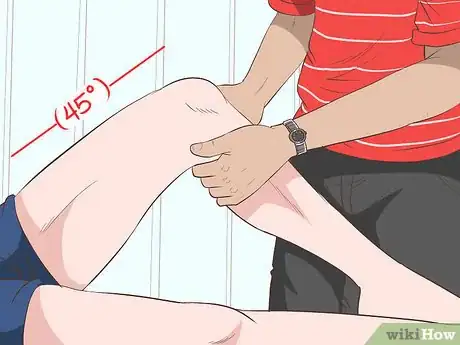
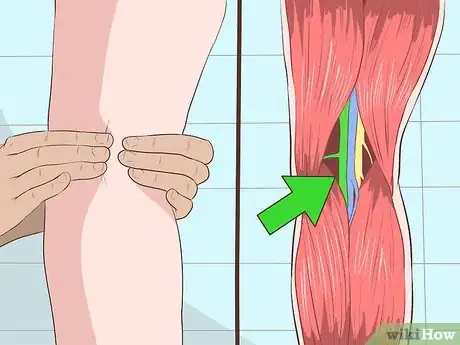



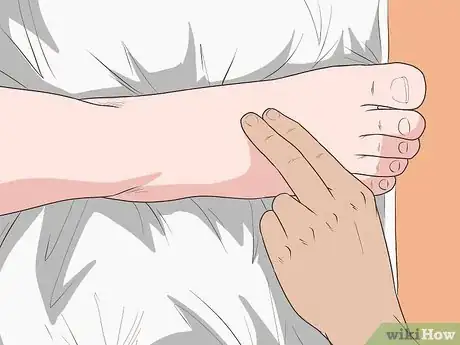
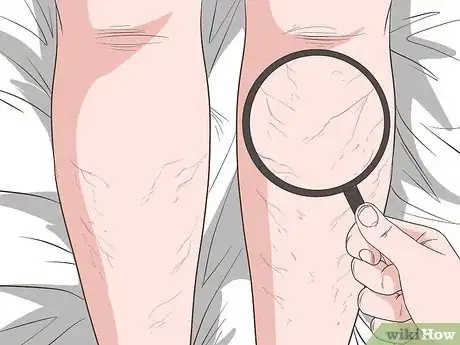



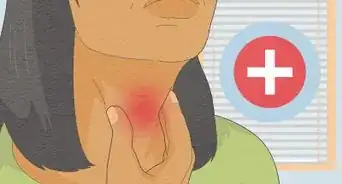


















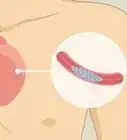




































Medical Disclaimer
The content of this article is not intended to be a substitute for professional medical advice, examination, diagnosis, or treatment. You should always contact your doctor or other qualified healthcare professional before starting, changing, or stopping any kind of health treatment.
Read More...